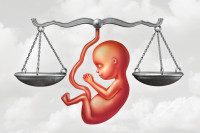Health
Nepal reports 24 new Omicron cases
Genome-sequencing was performed on random samples after S-gene target dropout reported.
Post Report
As many as 24 new Omicron cases have been confirmed in Nepal, the Ministry of Health said on Friday.
“S-gene target dropout was found in 250 samples among the 1,146 random positive samples collected in the month of Poush,” said the ministry in a statement. “Gene sequencing tests performed on 24 samples with S-gene dropout showed Omicron infections in all of them.”
The World Health Organisation says S-gene is not present in Omicron due to multiple mutations the variant has undergone and is considered a marker to identify the latest iteration of the coronavirus.
“One of the target genes is not detected [called S-gene dropout or S-gene target failure] and this test can therefore be used as a marker for this variant, pending sequencing confirmation,” states the UN health body.
Dr Sangita Mishra, the spokesperson for the Ministry of Health, told the Post earlier this week that S-gene dropout was found in several infected people.
“We have asked laboratories to send swab samples of such infected people, whose S-gene is missing, to Kathmandu for whole-genome sequencing,” she said.
Concerns over a spike in Omicron cases have grown in Nepal, which was battered by the Delta variant last in April, as test positivity rate on the people returning from India has also gone up significantly of late.
Earlier in December, three cases of Omicron were confirmed in Nepal, but all three infected persons tested negative later.
The way coronavirus cases are rising should not be ignored, say public health experts, especially when neighbouring India is reporting an exponential rise in infections.
India on Friday reported 117,100 new Covid-19 cases, the most since early June, as the Omicron variant overtakes Delta in the cities. The country also reported 302 new deaths, taking the total to 483,178.
Nepal on Thursday reported 478 new cases. On Wednesday, the number was 370. The previous day, the number stood at 291.
The daily test positivity rate (of polymerase chain reaction tests) for the last three days (Tuesday, Wednesday and Thursday) is—4.5 percent, 5.5 percent and 6.6 percent, respectively.
“The rise in new cases is a clear indication that a new wave could hit anytime,” Dr Biraj Karmacharya, an epidemiologist, told the Post on Thursday. “The new wave will start from clusters [schools, offices, unvaccinated areas and so on]—people who are unvaccinated will be affected the most.”
The ministry, through the statement, has urged everyone to maintain caution in view of rising Omicron cases across the world.
“Taking into consideration the current data from across the world and Nepal, everyone should take additional safety measures as Covid-19 cases due to Omicron could rise exponentially,” the statement reads. “We urge everyone to adhere to public health safety measures.”




 5.53°C Kathmandu
5.53°C Kathmandu












%20(1).jpg&w=300&height=200)
